-
1 of 253523 objects
Ishqnamah عشقنامه (The Book of Love) 1849-50
Manuscript on paper. | 46 x 29.5 x 5.4 cm (book measurement (conservation)) | RCIN 1005035
Wajid Ali Shah, King of Awadh (1822-87)
Ishqnamah عشقنامه (The Book of Love) 1849-50

Wajid Ali Shah, King of Awadh (1822-87)
Master: Ishqnamah عشقنامه (The Book of Love) Item: Najib al-Dawlah, Vahid al-Dawlah, Tahsin al-Dawlah and Razi al-Dawlah come to sing as Wajid Ali Shah sits holding his sitar behind a curtain with some ladies (1259/1843-4) 1849-50
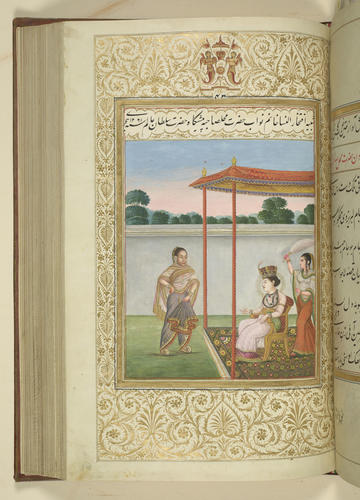
Wajid Ali Shah, King of Awadh (1822-87)
Master: Ishqnamah عشقنامه (The Book of Love) Item: Iftikhar al-Nisa (Begum Hazrat Mahal) before Wajid Ali Shah (1261/1845-6) 1849-50
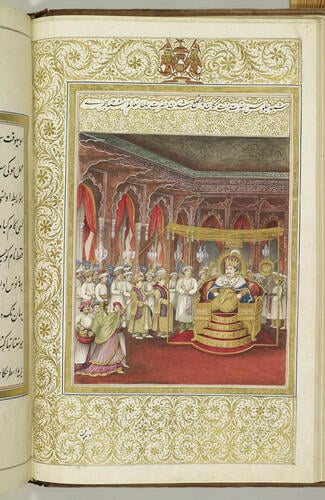
Wajid Ali Shah, King of Awadh (1822-87)
Master: Ishqnamah عشقنامه (The Book of Love) Item: Accession of Amjad Ali Shah and investiture of Wajid Ali Shah as heir apparent (1258/1842) 1849-50
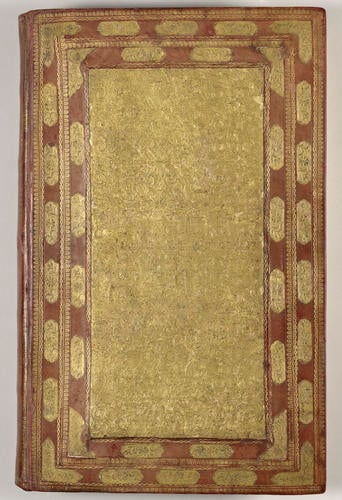
Wajid Ali Shah, King of Awadh (1822-87)
Ishqnamah عشقنامه (The Book of Love) 1849-50
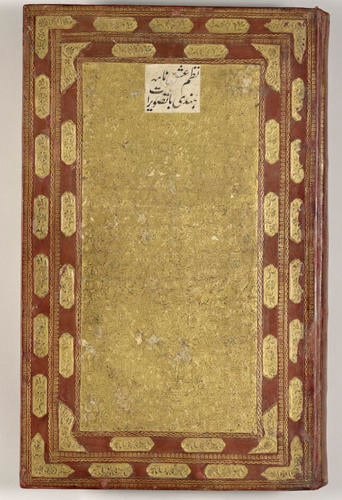
Wajid Ali Shah, King of Awadh (1822-87)
Ishqnamah عشقنامه (The Book of Love) 1849-50
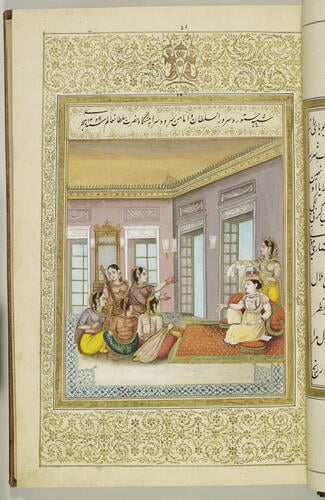
Wajid Ali Shah, King of Awadh (1822-87)
Master: Ishqnamah عشقنامه (The Book of Love) Item: Masturah, Surur al-Sultan and female musicians with Wajid Ali Shah (1259/1843-4) 1849-50
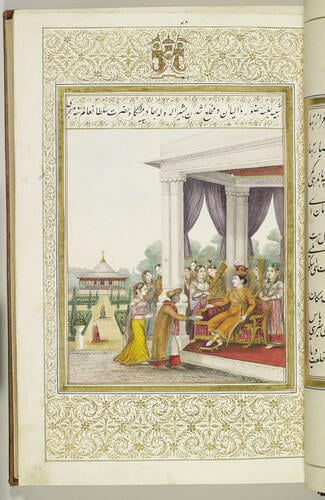
Wajid Ali Shah, King of Awadh (1822-87)
Master: Ishqnamah عشقنامه (The Book of Love) Item: Wajid Ali Shah gives Bashir al-Dawlah robes of honour (1260/1844-5) 1849-50
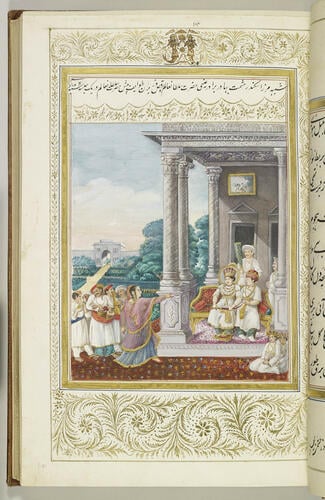
Wajid Ali Shah, King of Awadh (1822-87)
Master: Ishqnamah عشقنامه (The Book of Love) Item: Mirza Sikander Hashmat with Wajid Ali Shah watching dancers and musicians (1260/1844-5) 1849-50
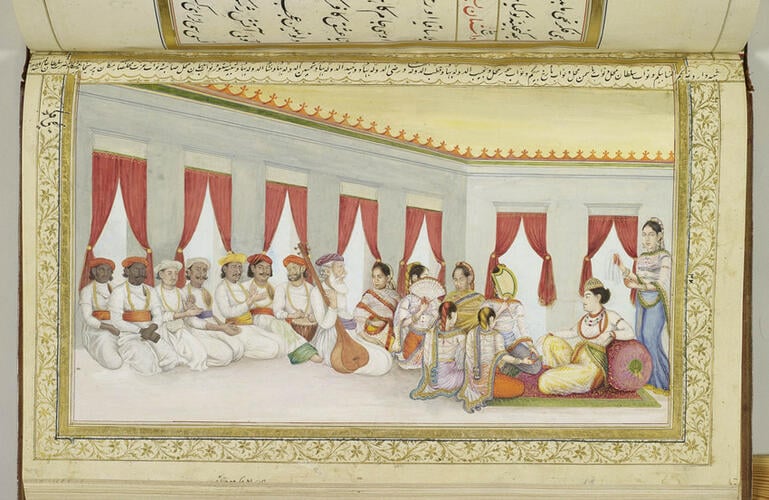
Wajid Ali Shah, King of Awadh (1822-87)
Master: Ishqnamah عشقنامه (The Book of Love) Item: The Prince listens to a performance with Najm al-Nisa, Sultan Mahal Yasmin, Mahrukh Begum, Hur Mahal, Najib al-Dawlah, Qutub al-Dawlah, Razi al-Dawlah, Vahid al-Dawlah, Tahsin al-Dawlah, Baha al-Dawlah, Nishat al-Dawlah, Masturah and Izzat Mukhlis Sahibah (1259/1843-4) 1849-50

Wajid Ali Shah, King of Awadh (1822-87)
Ishqnamah عشقنامه (The Book of Love) 1849-50

Wajid Ali Shah, King of Awadh (1822-87)
Master: Ishqnamah عشقنامه (The Book of Love) Item: Bihtar al-Nisa, with other ladies present, entertains Wajid Ali Shah to a meal (1259/1843-4) 1849-50
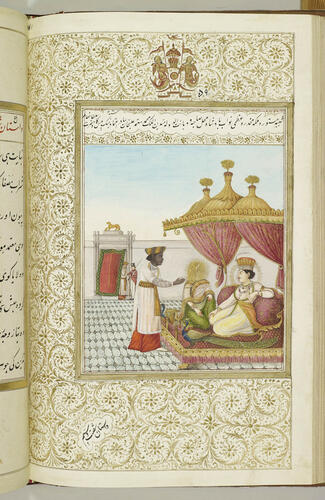
Wajid Ali Shah, King of Awadh (1822-87)
Master: Ishqnamah عشقنامه (The Book of Love) Item: Masturah Mahal with Wajid Ali Shah on a dias; Diyanat al-Dawlah stands; an attendant and a soldier stand in the background (1261/1845-6) 1849-50

Wajid Ali Shah, King of Awadh (1822-87)
Ishqnamah عشقنامه (The Book of Love) 1849-50
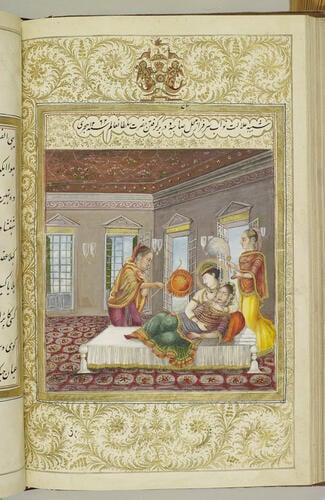
Wajid Ali Shah, King of Awadh (1822-87)
Master: Ishqnamah عشقنامه (The Book of Love) Item: Wajid Ali Shah holds Sarfaraz Mahal who has taken ill (1262/1846-7) 1849-50

Wajid Ali Shah, King of Awadh (1822-87)
Master: Ishqnamah عشقنامه (The Book of Love) Item: Iftikhar al-Nisa (Begum Hazrat Mahal) before Wajid Ali Shah (1261/1845-6) 1849-50
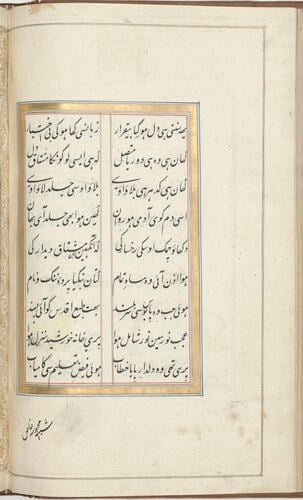
Wajid Ali Shah, King of Awadh (1822-87)
Master: Ishqnamah عشقنامه (The Book of Love) Item: Dildar Mahal enters royal presence (1261/1845-6) 1849-50
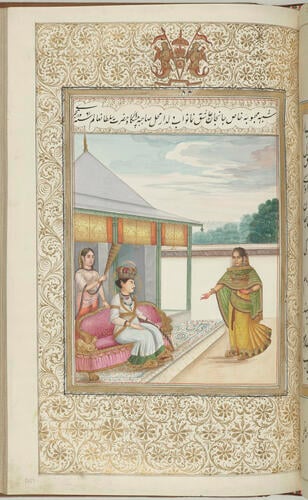
Wajid Ali Shah, King of Awadh (1822-87)
Master: Ishqnamah عشقنامه (The Book of Love) Item: Dildar Mahal enters royal presence (1261/1845-6) 1849-50

Wajid Ali Shah, King of Awadh (1822-87)
Master: Ishqnamah عشقنامه (The Book of Love) Item: Iftikhar al-Nisa (Begum Hazrat Mahal) before Wajid Ali Shah (1261/1845-6) 1849-50



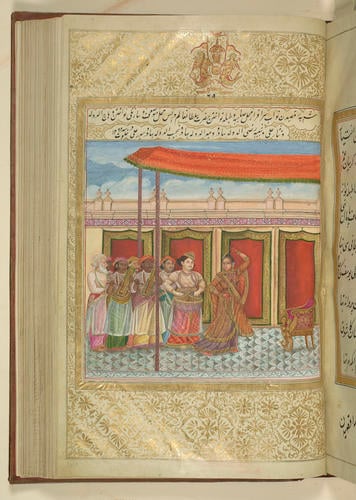
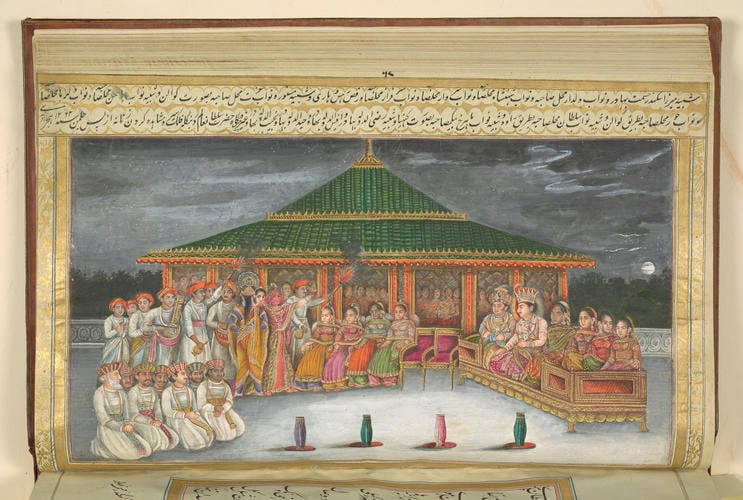
















-
An illustrated and illuminated manuscript copy of the Ishqnamah (Book of Love), a youthful autobiography written in Urdu verse by the last King of Awadh in India, Wajid Ali Shah (r. 1847–56). The poem revolves around the theme of ishq, ‘love’, and nearly all of the manuscript’s 104 illustrations portray the two great loves of his life: music and women.
Wajid Ali Shah was prolific writer, poet and musician raised in Awadh’s capital city of Lucknow, a centre of Indian urban high culture famous for its poets, dancers and musicians. He was not born in direct line for succession and was already 21 when proclaimed heir apparent. His interest in the performing arts led to him to support the training of a group of women within the palace whom he called paris (fairies) and he personally directed their performances. As a Shia Muslim, Wajid Ali Shah could marry up to four women in official ceremonies but as many as he liked through temporary marriage contracts. He is believed to have married more than 375 women over the course of his life, many of whom were paris.
The text is a long poem written in rhyming couplets which describes the author’s life and loves in Lucknow. Wajid Ali Shah completed the poem during the first two years of his reign. The king styles himself as a Yusuf (Joseph), a sensual magnet for both men and women. He elaborates on his emotional connection to the arts and the powers of music and song to overpower its listeners and influence both the body and mind. As in many of the Persian and Urdu classics, the dastans (versified stories) of the text become progressively darker in tone as the king, the wounded hero, discovers the personal betrayals of his lovers. As well as the romance narrative, the poem refers to important events in Wajid Ali Shah’s life including both his and his father’s coronations.
A manuscript Persian prose version of the text dated 1848-9 exists in the Sherani Collection of the Punjab University Library in Lahore. It notes where paintings are to appear and may have been produced as a working text for the artists who painted the illustrations of the poetry manuscript.
The Ishqnamah in the Royal Collection is the most lavish surviving manuscript from Wajid Ali Shah’s reign. The text is written in large nastaliq script and the volume contains 144 painted illustrations. Those pages with illustrations have decorated gold borders headed with the Awadhi royal coat of arms. Most of the painted scenes are set in and around the Indo-European palaces of Lucknow. Wajid Ali Shah appears in all but three of the paintings (ff.168v, 289r and 339v). From just before he becomes Crown Prince onwards (f.25r) he is depicted with a gold halo and from his coronation (f.357r) he wears a haloed crown. For the depiction of Wajid Ali Shah’s wives, the painters based their portraits on photographs, probably by the gentleman amateur Ahmad Ali Khan, the King’s court photographer. Their faces are detailed individually but frank and unsmiling, their eyes downcast as if avoiding the photographer’s eye. Some of the women’s faces are either not shown, covered with flowers, fans, parasols, or a halo, or depicted from behind (see ff. 12r, 38v, 69r, 89r, 93v, 117v, 154r, 204v) possibly because the women refused to sit for the camera. Wajid Ali Shah’s favourite musicians appear throughout the paintings including the celebrated Qutub Ali Khan, known as Qutub al-Dawlah shown instructing Wajid Ali Shah on f. 82r.
The volume is bound in a brown calf binding covered in gilt panels with embossed floral designs and silvered doublures. A label inscribed with a Persian title on front cover reads: nazm-i 'ishqnamah-yi hindi ba taswirat (Indian poem of the Ishqnamah [Book of Love], with pictures).
Thousands of royal Awadhi books and manuscripts were destroyed in 1858 during the ransacking of the palace in Lucknow so this volume is a rare survival of late Awadhi manuscript production. Soldiers took the manuscript and gave it to Sir John Lawrence (later Governor-General and Viceroy of India) who presented it to Queen Victoria in 1859. In a letter, Sir John Lawrence noted ‘This book is curious and interesting from two circumstances. It was prepared in the Palace of Lucknow under the direction of the King of Oude, and is of course a faithful illustration of the life and dress of the highest Mahomedan families in India. Secondly, it was taken by some Seikhs [Sikhs] of one of the Punjabee Regiments at the time the Palace of Lucknow was stormed—they gave it to their commanding officer, who was good enough to present it to me, as the Corps was raised under my orders….’ In his letter, Lawrence used the term 'Mohamedan'. This was a word commonly used by Europeans to refer to Muslims or wider Islamic culture until the mid-twentieth century. It is seen by many Muslims as offensive and has since fallen out of use.
Although the volume remained in Lucknow after Wajid Ali Shah was deposed in 1856, it is likely that he brought other copies of the Ishqnamah text with him to Calcutta. He published lithograph copies of many of his works and Urdu translations of the Ishqnamah were printed in the twentieth century under the titles Mahal Khana Shahi (The Royal King’s House) and Parikhana (The Fairy House). In the Royal Library at Windsor Castle, the manuscript was known for many years as ‘Customs of the Court of Oude'.Provenance
Presented to Queen Victoria by Sir John Lawrence, 1859
-
Medium and techniques
Manuscript on paper.
Measurements
46 x 29.5 x 5.4 cm (book measurement (conservation))
24 x 15 cm (text sheet)
Category
Alternative title(s)
Customs of the court of Oudh.
Indian poem of the Ishqnamah [Book of love] with pictures